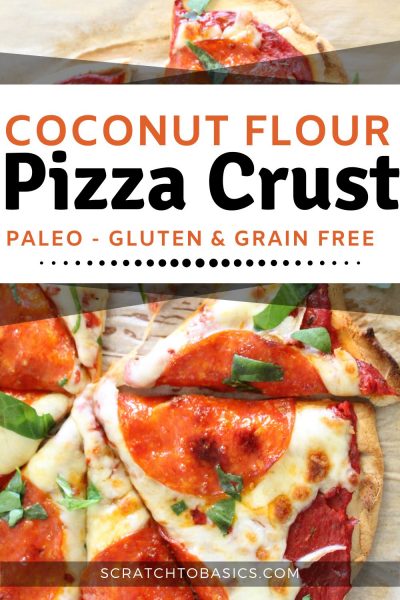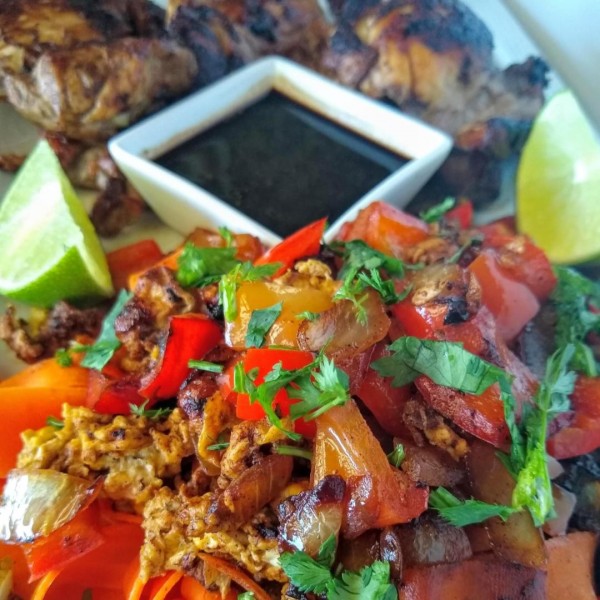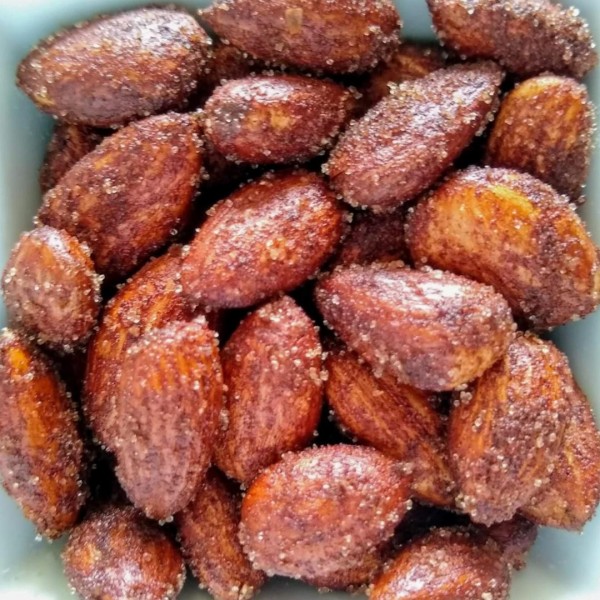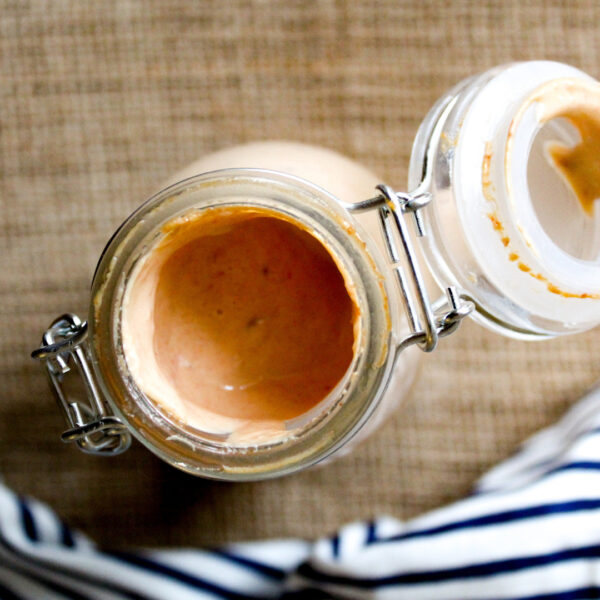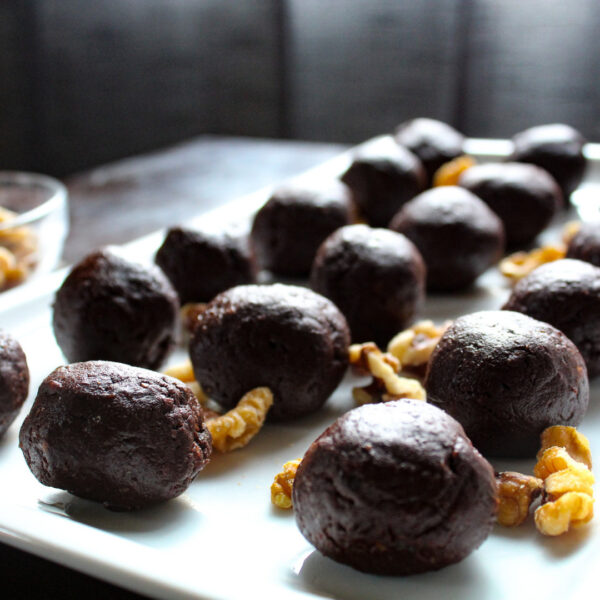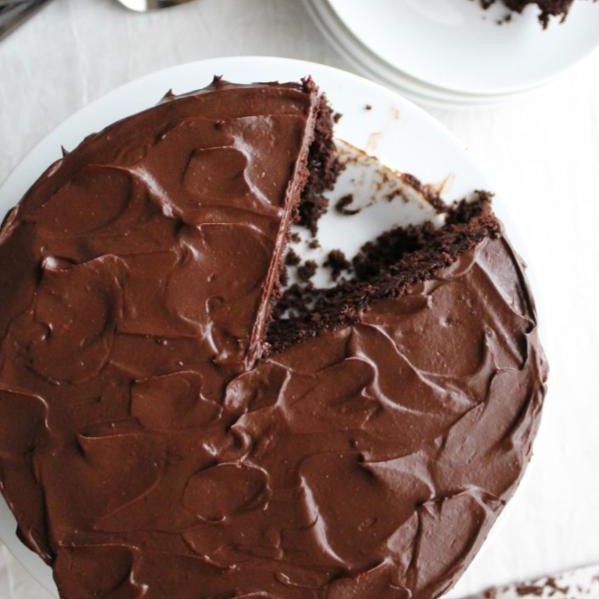Pizza Crust With Coconut Flour [Paleo | GF | DF]
Some of the links on this site may be affiliate links. This means, at no additional cost to you, I may be paid a small commission if you follow the links and make a purchase. Learn more here.
This Paleo pizza crust recipe uses coconut flour, tapioca flour, coconut milk, an egg, and a bit of salt. With just five ingredients, you’ve got a gluten free, grain free, nut free pizza dough recipe. It holds together well, and you can roll it out to your preferred thickness.
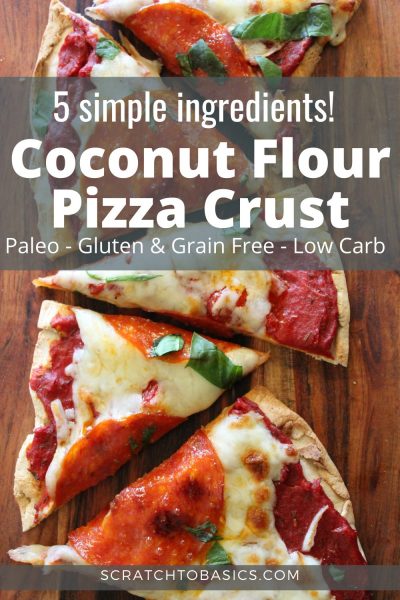
What is the best flour for pizza crust?
Honestly, you can make a good pizza crust with a LOT of different flours. Which is great news. That means if you decide to go gluten free, or grain free, or dairy free, or ANYTHING free, you’ll still be able to find a pizza crust recipe that works for you.
When my husband and I started dating, we unknowingly started a Friday night pizza night tradition. This tradition has continued for over ten years, although the crust has changed depending on our current food habits.
We’ve done the “normal” wheat crust, the sourdough crust, then we moved to a gluten free & grain free almond flour pizza crust, then to cauliflower crust, and now we’re hooked on this coconut flour pizza crust recipe.
We love pizza. The crust may change, but it still hits the spot. Every. Single. Time.
I created this almond flour pizza crust when we switched away from gluten, but I like to add some variety into my diet. This recipe gives a thin crust, crunchy pizza crust which is harder to achieve with the almond flour pizza crust.
Tools used to make this Paleo pizza crust recipe
- Parchment Paper – These pre-cut sheets are awesome.
- Mixing bowl – This kind is nice because it won’t slip off the counter.
- Spoon to mix – I’m loving these wooden mixing spoons
- Rolling pin – We have this kind and it’s been great.
- Baking Sheet – This kind is non-toxic AND dishwasher safe.
Optional/bonus tools to make pizza night fun & easy
- Portable pizza oven – totally on our wish list
- Pizza cutter like the pros – also on the wish list
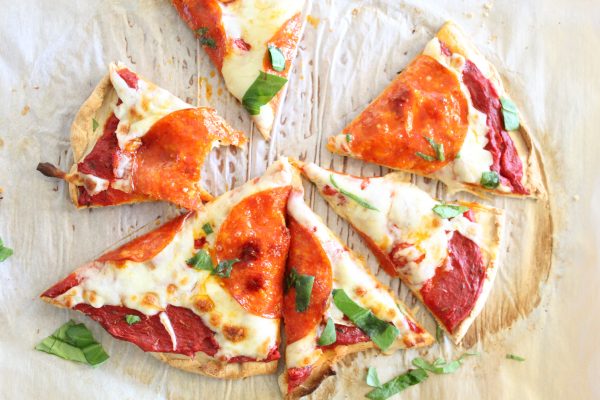
Ingredients Needed to Make pizza crust with coconut flour
- Coconut flour – To develop this recipe, I used Bob’s Red Mill – get it here. Don’t substitute any other flour for this one, otherwise the recipe will fail.
- Tapioca flour – I used Bob’s Red Mill brand – get some here. Tapioca flour is a little bit finer and helps the dough bind together.
- One egg – We love Vital Farms or Happy Eggs pastured eggs lately. The egg will helps keep the gluten free, dairy free pizza crust together.
- Coconut milk – canned & full fat. This kind has no guar gum.
- Salt – We love this salt because it’s still got those trace minerals that are super important for our bodies.
How to Make Coconut flour Pizza Crust
Follow these steps (and use the step-by-step pictures to guide you in making this coconut flour pizza crust).
It’s a super simple recipe, but rolling out the dough can get sticky – that’s why we use the double parchment paper.
- Add all the ingredients to the bowl & stir to combine
- Roll the dough out with a rolling pin between two pieces of parchment paper. If the dough sticks to the parchment, it’s too wet. Add more flour. If it’s really crumbly, it’s too dry. Add more moisture (water, oil, egg).
- Make a crust by rolling up the edges if you’d like
- Bake on one piece of parchment in a 350 (F) oven.
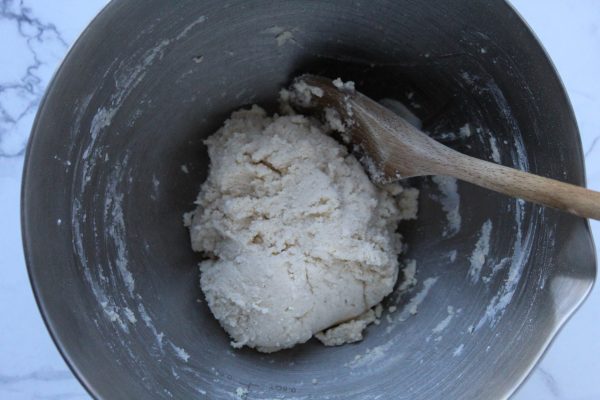
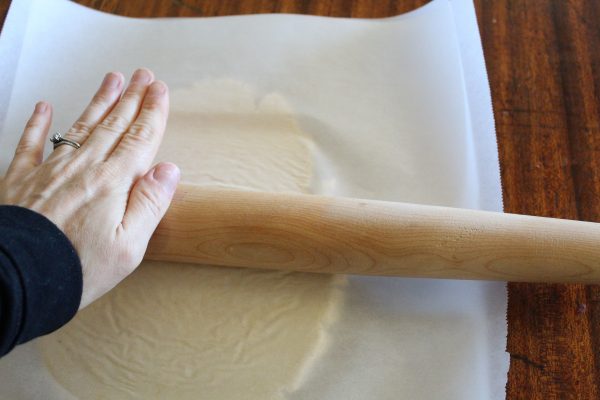
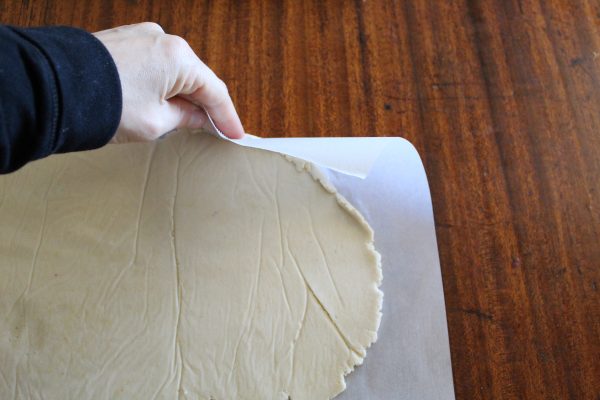
Now you’re ready to top your gluten free dairy free pizza crust with toppings & bake again until the cheese is melted & toppings are hot.


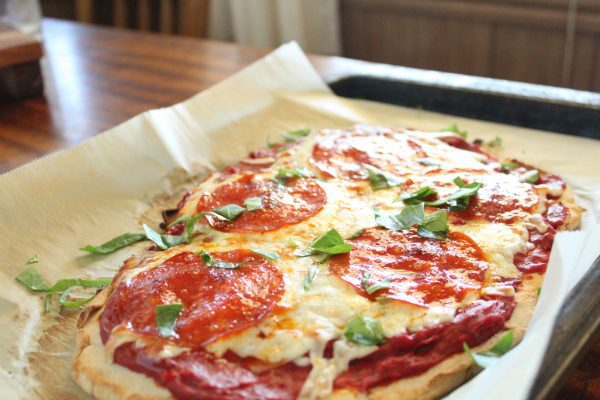
FAQ & Recipe Tips
What do I do if the crust is sticking to the parchment when I roll it out?
We roll the dough between two pieces of parchment paper. Using your rolling pin, roll it out. If you notice the dough sticks to the parchment, the dough is too wet. Add more flour. If it’s really crumbly, it’s too dry. Add more moisture (water, oil, egg).
Is coconut flour better than almond flour?
Compared to almond flour, coconut flour has fewer calories per ounce and is useful in low-carb and keto recipes. Coconut flour is just dried and ground up coconuts. Almond flour is ground up almonds. Neither has glutenous properties, which is why we add egg and tapioca to help it stay together.
What is keto pizza crust made of?
Keto pizza crust will likely use cheese instead of tapioca as the binder. This is because cheese is high fat, and low carb, whereas tapioca is higher carb and low fat. Many of the keto pizza crust recipes are very heavy on the cheese (likely with coconut flour or almond flour).
How do you make coconut flour less crumbly?
Coconut flour is extremely absorbent, and even a small amount of flour can soak up a lot of liquid. Coconut flour has no binding properties (remember, it’s just ground up dried coconuts) so it might get crumbly if you don’t have enough moisture in the dough.
Is there such a thing as gluten-free dairy free pizza?
When you begin a gluten-free, dairy-free diet, you don’t have to give up all of your favorite items that are created with flour and cheese. This gluten-free, dairy-free pizza crust recipe has simple ratios and utilizes coconut flour and tapioca flour instead of almond flour. Use a dairy free cheese on top, or go cheese-less.
What is the secret to a crispy pizza crust? / How do you make the bottom of pizza crust crispy?
With a traditional wheat flour pizza crust you want to make sure the baking steel or pizza stone is hot before putting the dough on. However, with this crust, the edges should get crispy in the oven when baking because of the ingredients it’s made with.
Related Recipes – What else do you need for your pizza?
- This is my most popular recipe on my entire blog – pizza sauce with tomato paste. It’s super thick (I can’t stand runny pizza sauce) and has such great flavor.
- And if you’re looking for topping options…I highly recommend slow-roasting tomato slices in the oven. So good.
- Need a dessert to go with your pizza? I highly recommend this Paleo chocolate pudding (gluten free, dairy free, made with avocados (yes, avocados). Seriously I can’t get enough of it.
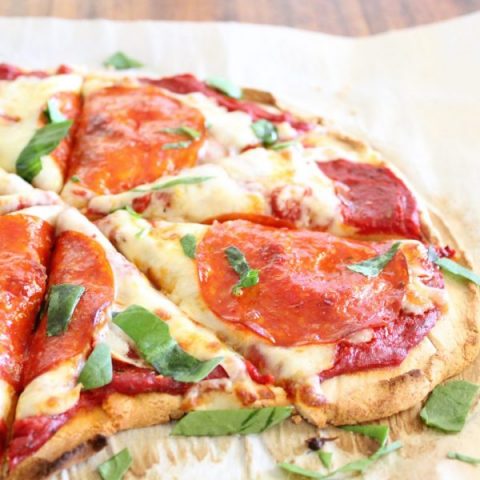
Coconut Flour Pizza Crust
Ingredients
- Ingredients
- ½ cup coconut flour
- ½ cup tapioca flour
- 1 egg
- ½ tsp salt
- ½ cup full-fat coconut milk (from a can)
Instructions
- Preheat the oven to 375 (F)
- Put all the ingredients into a mixing bowl and mix with a spoon until combined.
- When it turns into a big ball, get two pieces of parchment out and set them on the counter.
- Put the dough between the two pieces of parchment paper and roll out the dough to the shape & thickness that you want. I typically do a rectangle/oval shape to fit within the baking sheet.
- When the dough is rolled out, take off the top piece of parchment and transfer the dough (on a piece of parchment) onto the baking sheet.
- Make a crust by rolling up the edges if you’d like
- Bake the dough in the 375 (F) oven for 15-20 minutes, or until lightly browned. The time will vary depending on how thick you make your crust. The thicker the crust, the longer it’ll take to bake
Notes
Note 1: Rolling out the dough between two pieces of parchment will keep the dough from sticking to the rolling pin. If you notice the dough sticks to the parchment, the dough is too wet. Add more flour. If it's really crumbly, it's too dry. Add more moisture (water, oil, egg).
Note 2: The longer you bake the crust, the crispier it will be.
Nutrition Information:
Yield: 8 Serving Size: 1 pizza crustAmount Per Serving: Calories: 102Total Fat: 5gSaturated Fat: 4gTrans Fat: 0gUnsaturated Fat: 1gCholesterol: 23mgSodium: 161mgCarbohydrates: 12gFiber: 1gSugar: 2gProtein: 3g
Save this for later on Pinterest!
